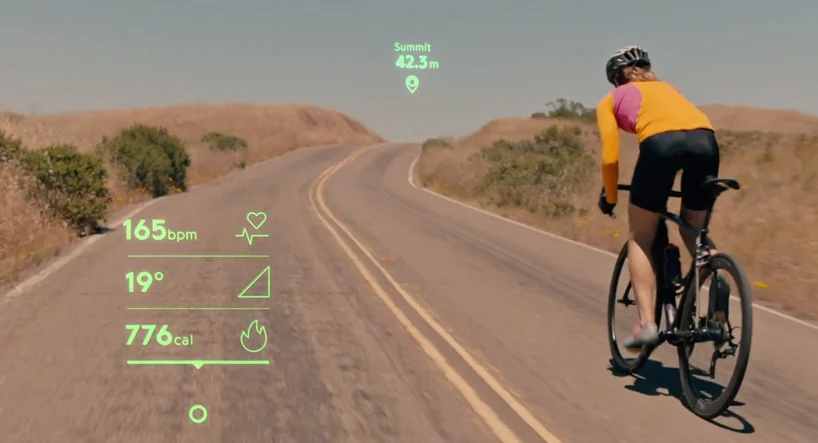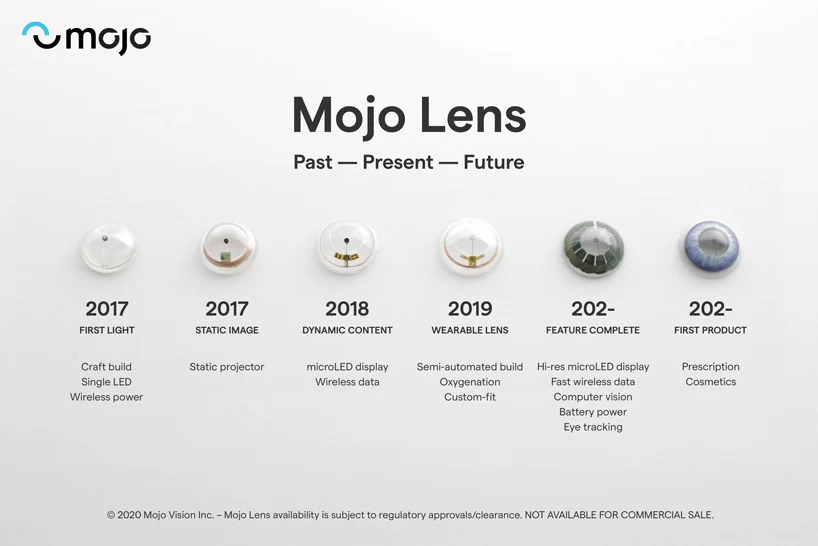Intelligent Vision: AR Contact Lenses Coming Soon?
A company working towards augmented reality contact lenses could revolutionize our daily lives, helping us lead safer, more tech-savvy existences.
Join the DZone community and get the full member experience.
Join For FreeGiven the number of variables and lack of empirical data, there’s simply no way to measure the number of people who need to wear glasses or contact lenses in the world. For instance, some people only need visionary aid to read, some to drive, some experience short or long-sightedness and others may simply turn to glasses as a fashion accessory. Of those who use contact lenses as well as eyeglasses, over 62% wear contact lenses more often.
Convenience, comfort, and flexibility of contact lenses are perhaps the most attributable factors to this high statistic. The small plastic lenses are incredibly portable, invisible, and negate the need to wear a whole frame on a user’s face. Contact lenses sit seamlessly on the curvature of the eye, giving the user a far wider field of view than glasses lenses - which often create blind spots and restrict vision. Contact lenses are typically less affected by adverse weather conditions such as fog and rain and are more suitable to wear when taking part in physical activity and competitive sports.

It’s no wonder why so many people with vision impairments opt for contact lenses. Their ability to provide enhanced vision without the cost of inconvenience or discomfort was truly revolutionary when disposable contact lenses first emerged in 1995. As with all things, the 21st century brought with it waves of technological developments that infiltrated every aspect of our lives. Already, with frames like the Amazon Echo, we are a step closer to seeing a tech revolution in the eyewear market. The emerging technology augmented reality (AR) has been particularly explosive.
Most people have probably interacted with AR in their daily lives. From Snapchat and Instagram filters to Google Maps and Waze - the digital content that is overlaid on our mobile device screens has been entertaining, convenient, and life-changing. However, it’s unlikely that many people have yet imagined the possibility of augmented reality contact lenses. Now they can, and should AR contact lenses live up to their promise of enhanced vision and additional overlayed information, we may need to brace ourselves for AR contact lenses to become the future of vision.
What Are AR Contact Lenses?
Until recently, a smartphone was as personal as a user could get with technology. Then came emerging technologies of augmented and virtual realities. Through hand-held devices, goggles, sensor gloves, and sophisticated software, it’s now possible to immerse yourself within digital environments where the lines between digital and reality are blurred.
Now, the digital world is getting closer to your face. Without the need to strap screens to your face, in what is surely the penultimate step to directly tapping into brains, augmented reality is now being used to display digital content in a contact lens.
The first of its kind has been launched by startup Mojo Vision after years of quiet research. The smart contact lenses use AR to place information inside the wearer’s eyes. The AR lenses use 14k pixels-per-inch micro-displays to project statistics like health tracking and other data.
The AR contact lens shows a green Google-glass-like display that scrolls pre-loaded information, such as text messages and the weather. In dim lighting, the lenses use cutting edge-detection to outline traffic signs and people. A demo of the future operating system displayed the future functionality of the AR contact lenses. This includes eye-tracking which will allow users to navigate a simple menu on the periphery by looking at an arrow icon that enlarges the information.

Mojo has committed itself to creating technological lenses that intuitively understand the activities a user is engaged in, so it doesn’t disturb them when it’s not wanted. This image-recognition technology, combined with motion sensors has enabled information to be instantaneous and unobtrusive, yet accessible any time hands-free.
The lenses have been specifically designed to help people with vision impairments by providing real-time contrast and lighting enhancements as well as zoom functionality. These enhanced image overlays are currently being applied to Mojo’s early-stage prototypes as they continue to develop their own algorithms for eye tracking.
In a nutshell, these AR contact lenses are in pursuit of a vision for invisible computing where you have the information you want, when you want it, and are not distracted by data when you don’t. The information should be helpful in a situation and fade away when a user wants to focus on the world around them.

The AR lenses aren’t soft or disposable. Rather, they’re hard scleral lenses to be used over and over. One of the predominant problems the contact lens industry faces is the excess use of plastic. AR contact lenses should contribute to a more sustainable visionary aid market. AR lenses will typically have to sit wirelessly charging in a bath of disinfectant overnight and be replaced on an annual basis.
AR Contact Lenses Applications
With a firm grasp on such exciting technology, it’s not difficult to see how AR lenses could be applied to different scenarios. Augmented reality, as defined as the real-time use of information in the form of text, graphics, and other virtual enhancements of real-world objects, is useful in an array of applications — let alone when it can be incorporated into the human vision with minimal hardware.
Healthcare and Medical Training
AR is no stranger to the healthcare sector. Its uses range from MRI applications to performing complex surgery. For example, student medical practitioners can learn the ins and outs of anatomy using AR headsets, or watch live operations for a closer learning experience. AR isn’t limited to training, however, since it has been relied on during operations where it can help reduce the need for traditional more invasive cameras and probes.
Yet, AR contact lenses take things further by allowing surgeons to draw on information and data related to the patient’s condition, without having to step away from the operating table. Elsewhere, nurses and trainee doctors now have the capacity to pull up information on any given patient’s records during their rounds.
Education and Training
Augmented reality already exists within the classroom. Teachers and educators are beginning to introduce more technology into the learning experience to help students engage with the subject matter at hand. From astrophysics to music and history, AR can provide a fun and immersive learning experience for pupils of all ages.
As AR lenses enter the classroom, we can expect an increase in engagement, as well as in the effectiveness of learning. Students will be able to hone in on information, key dates, formulas, or vocabulary to assist them in their work. The possibilities here are truly endless.
Business Logistics
From cargo loading to international trade and efficient pickups, AR has helped businesses streamline their logistics operations. A device with AR capabilities can quickly and efficiently check the loaded cargo by scanning barcodes. Wearable AR devices prevent errors and speed up the process. Contact lenses supported by AR can free up hands, generate information as needed, and ensure compliances are all in line with international import and export regulations.
Navigation
GPS tools like Google Maps and Waze have long since dominated the navigation market by overlaying digital content onto the roads and streets around us. We follow the blue arrows, graciously accept speed-camera warnings, and follow speed limits as they’re presented to us through our mobile screens.
Should AR contact lenses live up to their promise, they could transform the way we navigate our way through the roads around us. AR contact lenses could guide a user by a virtual path in their vision, creating a safer than traditional navigation apps experience. This could be particularly useful for travel abroad, driving, and engaging in sports. Eliminating the need to hold or mount an AR-supported device, the user can be free to reach their destination, quite literally in the blink of an eye.
The Future of Vision
The vision impaired, the trendsetters, the learners, and the lost all have one thing in common — their prospective benefit of augmented reality contact lenses. If Europe — Sweden and North Macedonia, in particular — has the highest number of individuals wearing contact lenses, with approximately 30% doing so, we can certainly expect an increase in this figure when AR contact lenses become commercially available.
The egular contact lens trend is on an upward trajectory. Their growth in popularity over the years has been, in part, due to a growing number of young people committing to their eye health and the industry's efforts to develop comfortable, long-lasting lenses. When these conveniences are combined with what can only be described as a digital sixth sense, their popularity is likely to grow.
Spurred on by demand across sectors, AR lenses will become more sophisticated, competitive, and accessible to all. Should they become the norm, there’s no telling where technology will take us next.
Opinions expressed by DZone contributors are their own.

Comments